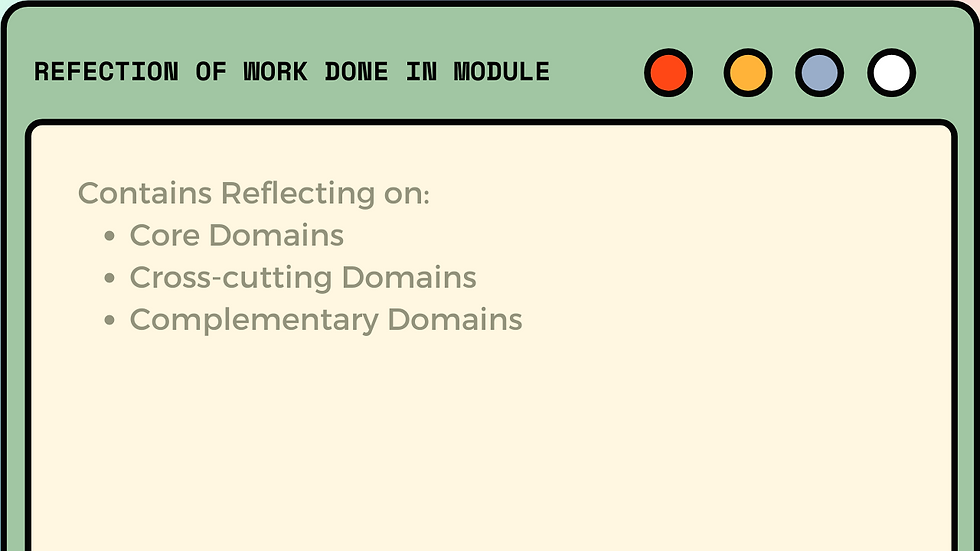Week 8 Reflection
- 2428616
- Oct 31, 2022
- 4 min read
This week the work was based on Health Information systems and Health Promotion: The Ottawa Charter. Health Information systems is the topic that stood out to me the most.
HIS is “a system that integrates data collection, processing, reporting, and use of the information necessary for improving health service effectiveness and efficiency through better management at all levels of health services” (WHO, 2004).The gathering of data occurs at four distinct levels. In order to meet the needs of the population, all levels of data are required. The levels are individual-level data, health facility-level data, public health surveillance data, and population-level data.
At the individual- level Individual patient profiles are compiled, patient-level healthcare requirements are identified, and medical treatment histories are recorded. Managing continuity of care based on a patient's past and across service levels is made easier with patient information. At the Health Facility Level information regarding resource procurement records and information regarding the services provided within a facility are gathered by health information systems. This data assists office directors with persuading for the assets expected to convey the administrations presented by that office.
In the Public health surveillance level of data, the prevalence of diseases within a specified geographical region, most frequently in relation to health districts, is the primary focus. Understanding BOD is aided by prevalence data. To identify new cases, incidence data are useful. Priorities for health promotion can be identified with the assistance of data on incidence and prevalence. Data at the population level. This involves a lot of data about who is using which health services and who isn't using them across the system. Population-level health data helps with reporting on health benefits in the community from interventions and programs that have been put in place.
There are four essential functionalities that must be taken into consideration at each level of data collection. These are: Data generation is the process of gathering data from predetermined indicators. These indicators alter in response to requirements. Putting all of this information together to get a bigger picture is called compilation. Analysing and synthesis is the process of figuring out what's going on and where improvements can be made by looking at the big picture. Communication and Utilization: communicating the analysis's findings to decision-makers so that resources can be made available to meet health-related needs. To respond appropriately to both the needs of the population and those of the individual, these four functions must occur at the appropriate times.
A good HIS: It provides a holistic picture of the disease/problem. It helps to assess the effectiveness of treatment protocols (current and new). It helps to assess the effectiveness of management plans. It gives an indication of progress/regression of health measures. It provides information for new programme development. It helps decision-makers prioritise resource allocation, such as medicine procurement or the allocation of human resources. It allows opportunities for innovation and development.
A Good HIS Helps with Health Planning. Health planners and decision-makers need different kinds of information including: Health and social determinants. Inputs to the health system and related processes. The performance or outputs of the health system. Health outcomes. Health inequalities. A good health information system brings together all relevant partners to ensure that users of health information have access to reliable, authoritative, useable, understandable, comparative data.
The HIS collecting information on health and social determinants links to the work that was done in Week 2, Session 1, Public Health. Public Health addresses the health needs by identifying the social determinants in a community, which are identified through something called a community diagnosis, and then addressing them with interventions. It was interesting to realise the importance of people and more specifically health workers in ensuring that the correct interventions are put in place by the relevant partners and the government. The information given must be reliable, useable, authoritative, understandable, and comparative because it makes a significant contribution to the community diagnosis.
The South African health system is challenged in the following ways. There is too much information to collect, insufficient resources, unfriendly tools that health professionals or anyone being surveyed can’t use, duplicated information, unclear descriptors, too many changes too often, and no buy-in from health care workers. The South African health system is not a good one currently. People are unwilling to participate in the various ways of getting the information that the government would need. This means that the health and social determinants aren’t addressed and therefore health inequalities in South Africa increase over time.
This week's work as a health professional helped me comprehend the significance of the government's efforts to gather community data. Additionally, I will make every effort to educate my co-workers. My contribution is not about me; rather, it is about assisting in enhancing the community's health status in the future.
References:
Health Metrics Network Framework and Standards for Country Health Information Systems, World Health Organization, January 2008. Available at: https://www.who.int/healthinfo/country_monitoring_evaluation/who-hmn-framework-standards-chi.pdfLinks to an external site. (Last accessed: 31 October 2022).
Schonfeldt A, Masilela T, Barron P, English R. Health information systems in South Africa. South African health review. 2011 Jan 1;2011(1):81-9. Available at: https://journals.co.za/content/healthr/2011/1/EJC119082Links to an external site. (Last accessed: 31 October 2022).
World Health Organization. (2004). Developing health management information systems: a practical guide for developing countries. Available at: https://iris.wpro.who.int/bitstream/handle/10665.1/5498/9290611650_eng.pdfLinks to an external site. (Last accessed: 31 October 2022).
I have changed the typography to the requirements listed, however, it may not show well so I have attached the word document below.


Comments